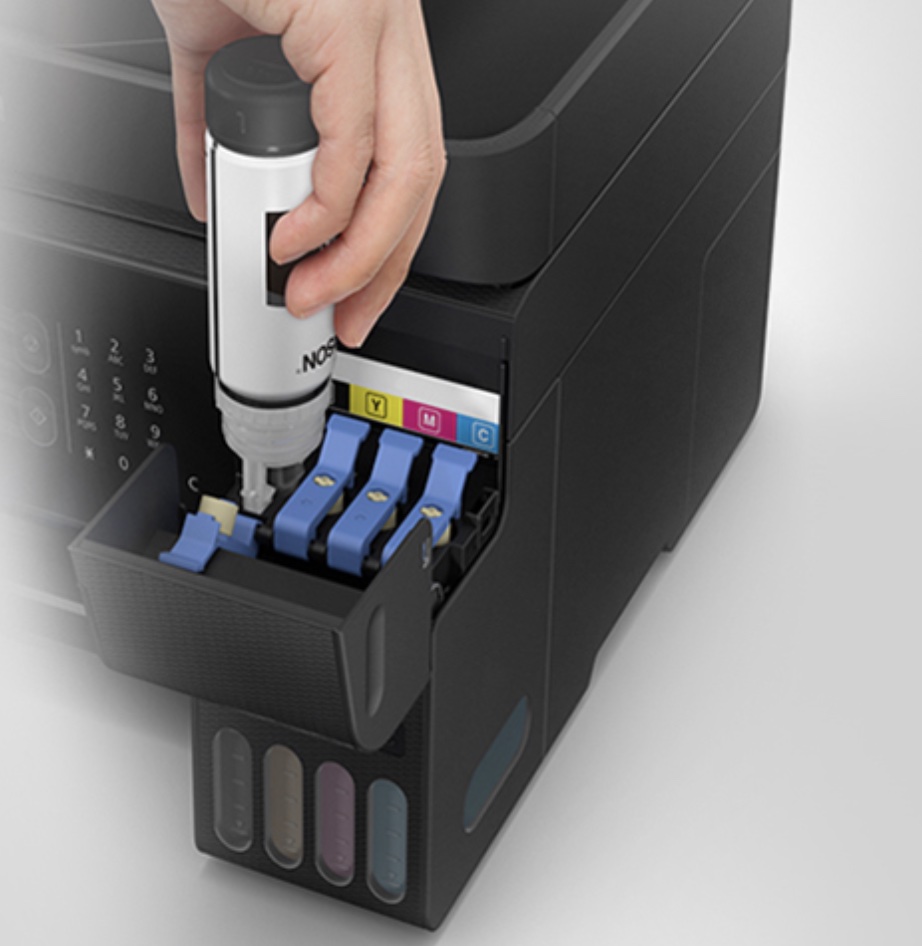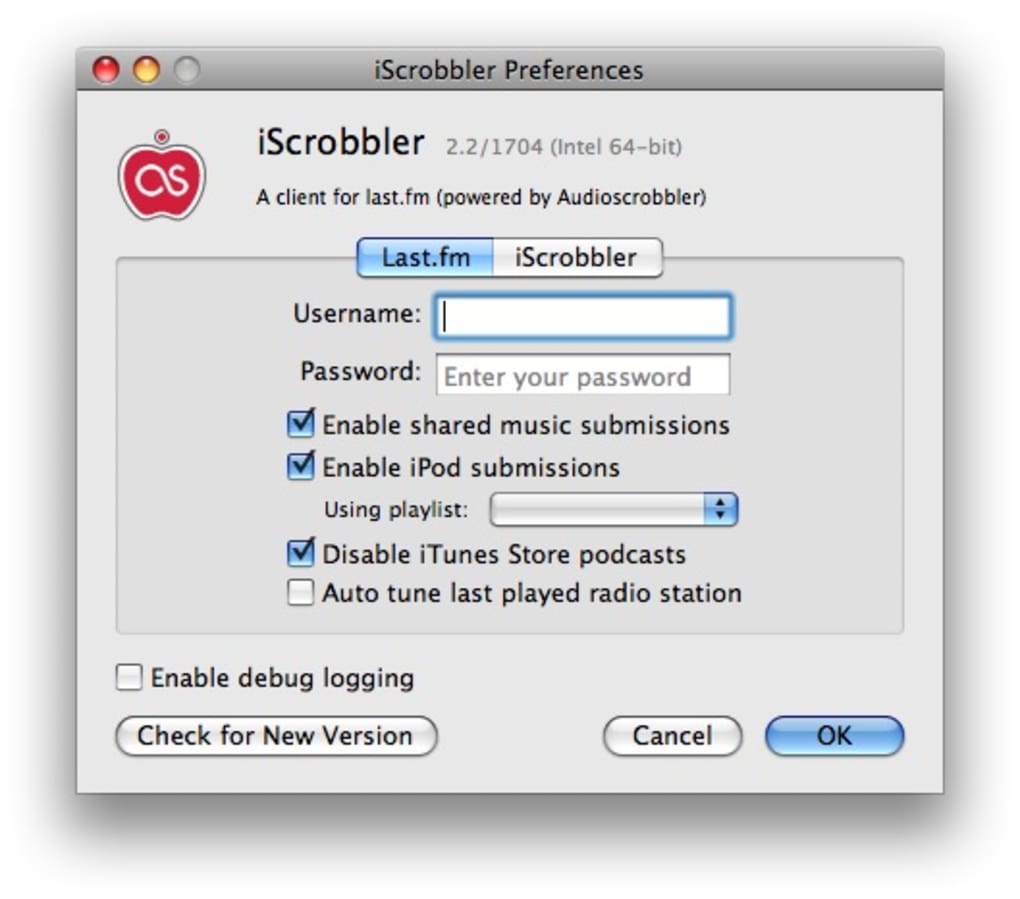Over the past year, two services — Pandora and Last.fm — have really risen to the forefront when it comes to helping users discover new music based on their preferences and generating custom music streams to play that music. Everyone’s got their preferences, and the Web is littered with blog posts extolling one over the other. Give either a try and you’ll see why they’ve developed such a following. They’re both amazing services that provide great ways to discover and listen to new music.
Is Cobbler A Dessert
A new version of iScrobbler came out on April 3rd 2007. Major changes in 1.5: iPod Shuffle support; The currently playing track can be Loved, Banned, Tagged, and Recommended from the Stats window. (10.4+ only) Previously played Tracks/Artists can be Loved, Banned, Tagged, and Recommended from the Top Lists window. If that doesn't suit you, our users have ranked 17 alternatives to Simple Scrobbler and four of them are available for Mac so hopefully you can find a suitable replacement. Other interesting Mac alternatives to Simple Scrobbler are SweetFM (Free, Open Source), Better Music for Google Play Music (Free) and iScrobbler (Free).
The funny thing is, the sites work in entirely different ways from one another. Last.fm takes a collaborative filtering approach. Install the iScrobbler helper app (Mac) or iSproggler (Windows), and Last.fm keeps track of every song you listen to. After you’ve listened to a few hundred songs or so, Last.fm has enough data to begin recommending music. It works by identifying “neighbors,” or people who like the same music you do, and then identifies those bands and songs that your neighbors really like but that you have never heard. You can use last.fm to listen to different audio streams, including ones synced with your neighbors’ preferences, linked to artists who are similar to the ones you like, or even attached to particular tags applied by Last.fm users. It’s a whole lot of fun to explore the data that you’ve provided to Last.fm to see which bands and songs you actually listen to the most. And you can surf the social network to see what your friends are listening to, or to make new friends.
Install the iScrobbler helper app (Mac) or iSproggler (Windows), and Last.fm keeps track of every song you listen to. After you’ve listened to a few hundred songs or so, Last.fm has enough data. Scrobbler free download - Last.fm Scrobbler, AT-Shuffle Scrobbler, Audioscrobbler Windows Media Player 9 Plugin, and many more programs. AudioScrobbler is a project designed to form music recommendations by sampling 'currently playing' data from the user's media player software. In a nutshell, Audioscrobbler endeavours to be your personal music advisor. It grows to know what music you like by monitoring what songs you play on your computer.
Pandora is completely different. It’s an outpost of the Music Genome Project, which was founded six years ago as an effort to create “the most comprehensive analysis of music ever.” A team of human beings has listened to over 10,000 artists over the past six years, characterizing each song with over 400 attributes such as melody, harmony, rhythm, and orchestration. Music recommendations are then made on the basis of these attributes. To start Pandora playing music, you tell Pandora about a song or artist you like — and then it starts playing music that it thinks is compatible with your choice. So if you tell Pandora that you like Pavement, it might play a song for you by Stephen Malkmus — not because people who like Pavement tend to like Stephen Malkmus, but rather because the songs have so many attributes in common with each other.
To me, Last.fm embodies the best characteristics of the social, collaborative, people-powered web. Music recommendations are driven by the listening habits of real live people, and there is significant social value to sharing lists of your most-listened-to artists, bands, and genres. Last.fm also has instant credibility because the music recommendations and the user listening data are based on what people actually do, not what they say they do. And short of installing a helper app, you don’t have to do anything to make Last.fm work for you. It knows what you like, and it knows what you’ve never heard.


Pandora, on the other hand, is an attempt to algorithmically model musical taste based on a multi-dimensional classification system. It works quite well in many cases, but in my experience, the quality and breadth of recommendations just don’t stack up to those provided by the vast community of users at Last.fm.

Try both for yourself, and leave a comment letting us know which one you prefer. And if you haven’t tried them yet, what’s stopping you?
Over the past year, two services — Pandora and Last.fm — have really risen to the forefront when it comes to helping users discover new music based on their preferences and generating custom music streams to play that music. Everyone’s got their preferences, and the Web is littered with blog posts extolling one over the other. Give either a try and you’ll see why they’ve developed such a following. They’re both amazing services that provide great ways to discover and listen to new music.

The funny thing is, the sites work in entirely different ways from one another. Last.fm takes a collaborative filtering approach. Install the iScrobbler helper app (Mac) or iSproggler (Windows), and Last.fm keeps track of every song you listen to. After you’ve listened to a few hundred songs or so, Last.fm has enough data to begin recommending music. It works by identifying “neighbors,” or people who like the same music you do, and then identifies those bands and songs that your neighbors really like but that you have never heard. You can use last.fm to listen to different audio streams, including ones synced with your neighbors’ preferences, linked to artists who are similar to the ones you like, or even attached to particular tags applied by Last.fm users. It’s a whole lot of fun to explore the data that you’ve provided to Last.fm to see which bands and songs you actually listen to the most. And you can surf the social network to see what your friends are listening to, or to make new friends.
Pandora is completely different. It’s an outpost of the Music Genome Project, which was founded six years ago as an effort to create “the most comprehensive analysis of music ever.” A team of human beings has listened to over 10,000 artists over the past six years, characterizing each song with over 400 attributes such as melody, harmony, rhythm, and orchestration. Music recommendations are then made on the basis of these attributes. To start Pandora playing music, you tell Pandora about a song or artist you like — and then it starts playing music that it thinks is compatible with your choice. So if you tell Pandora that you like Pavement, it might play a song for you by Stephen Malkmus — not because people who like Pavement tend to like Stephen Malkmus, but rather because the songs have so many attributes in common with each other.
To me, Last.fm embodies the best characteristics of the social, collaborative, people-powered web. Music recommendations are driven by the listening habits of real live people, and there is significant social value to sharing lists of your most-listened-to artists, bands, and genres. Last.fm also has instant credibility because the music recommendations and the user listening data are based on what people actually do, not what they say they do. And short of installing a helper app, you don’t have to do anything to make Last.fm work for you. It knows what you like, and it knows what you’ve never heard.
Iscribble
Pandora, on the other hand, is an attempt to algorithmically model musical taste based on a multi-dimensional classification system. It works quite well in many cases, but in my experience, the quality and breadth of recommendations just don’t stack up to those provided by the vast community of users at Last.fm.
Iscrobbler
Try both for yourself, and leave a comment letting us know which one you prefer. And if you haven’t tried them yet, what’s stopping you?
